Oman at 55: A Nation of Vision, Heritage & Harmony
- THE BUZZAAR
-
Nov 01
- Share post
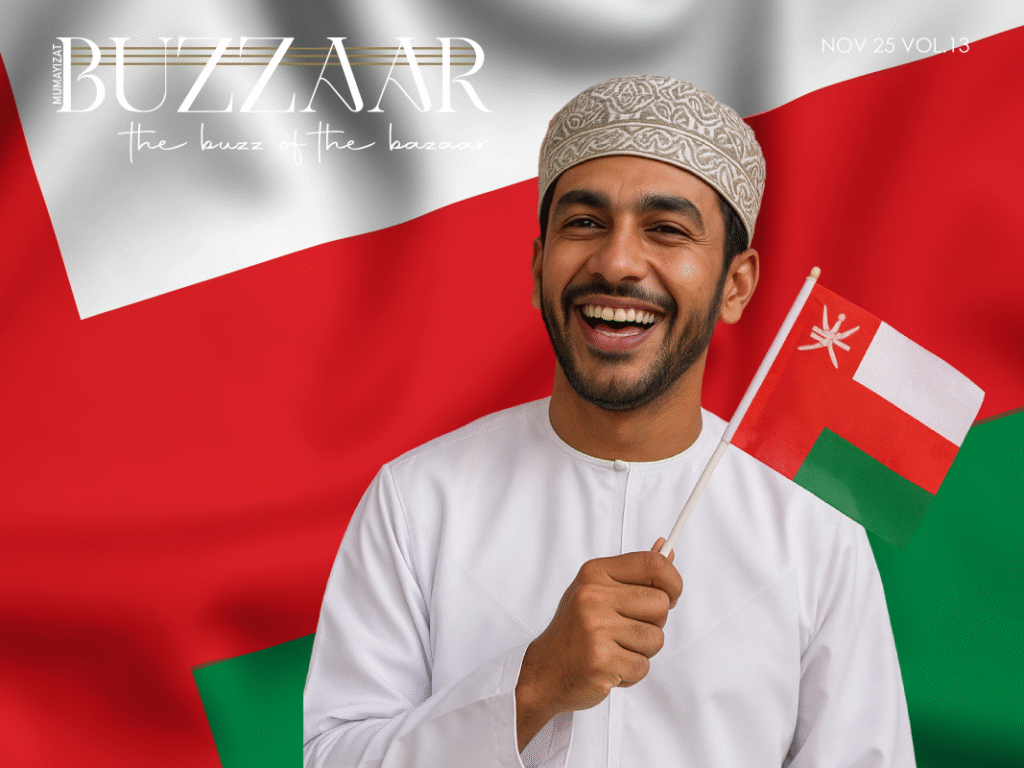
Editor’s Foreword – NOVEMBER 2025
Welcome to the November issue of BUZZAAR, where we celebrate heritage, innovation, and the spirit of discovery across the Gulf and beyond. This month, our lead story pays tribute to Oman, marking its 55th National Day with a feature that explores the nation’s remarkable journey of vision, culture, and unity. From its rich traditions to sustainable initiatives and thriving creativity, Oman exemplifies the balance between honoring heritage and embracing progress.
Travel takes center stage with a journey through Vietnam, a land of breathtaking landscapes, bustling streets, and culinary wonders. Our travel feature invites readers to explore Ha Long Bay, the ancient charm of Hoi An, and the modern luxuries redefining Southeast Asian tourism — a perfect destination for GCC explorers seeking culture, cuisine, and adventure.
In our lifestyle pages, we dive into trends shaping the region. From slow living and mindful wellness to Arabian-inspired fashion and GCC cuisine gaining global recognition, our curated stories reflect the rich tapestry of life in the Gulf. We shine a spotlight on young innovators, artists, and entrepreneurs who are redefining creativity, business, and sustainability, proving that the region’s future is being shaped by bold ideas and visionary talent.
Our design and living section celebrates the natural beauty of the Gulf, with homes and resorts inspired by coastal and mountain landscapes, where tradition meets contemporary elegance. Meanwhile, our sustainability feature examines the Gulf’s green transformation, from renewable energy initiatives and eco-tourism to conscious consumerism shaping future lifestyles.
This issue is a tribute to the Gulf’s dynamic spirit, blending culture, innovation, and aspiration. We hope it inspires readers to explore, create, and engage with the world around them, embracing the balance of heritage and modernity that defines life in the GCC today.
Enjoy the journey.
With curiosity and clarity,
Austin D’Silva, The Editor | BUZZAAR Lifestyle Magazine

Oman at 55: A Nation of Vision, Heritage & Harmony
“Oman at 55: A Nation of Vision, Heritage & Harmony” – A celebratory feature marking Oman’s 55th National Day — highlighting national achievements, cultural evolution, sustainability initiatives, and the spirit of unity that defines the Sultanate.
Words – Austin
Fifty-five years ago, a remarkable journey began — one that transformed a serene land of deserts and seas into one of the Arab world’s most stable, forward-looking, and harmonious nations. Today, as Oman marks its 55th National Day, the Sultanate stands as a proud symbol of progress rooted in tradition, a country that has gracefully balanced the winds of modernity with the wisdom of its past.
A Legacy of Vision and Leadership
Oman’s renaissance story is inseparable from the visionary leadership that has guided it since 1970. From the early years of modernization to the present era of transformation under His Majesty Sultan Haitham bin Tarik, Oman has consistently embraced a path of steady, inclusive, and sustainable growth.
Under Vision 2040, the Sultanate is redefining its economy, investing heavily in diversification beyond oil — from tourism, logistics, fisheries, and technology to renewable energy and creative industries. This vision reflects a national commitment to empower youth, foster entrepreneurship, and ensure prosperity for generations to come.
A Culture that Breathes Harmony
Few nations embody harmony like Oman does. Its people, known for their warmth and hospitality, are deeply connected to traditions that emphasize respect, humility, and coexistence. The Omani identity — shaped by centuries of maritime trade, diplomacy, and intercultural exchange — continues to thrive in a modern context.
From the intricate silver jewelry of Nizwa to the poetry of the desert, from the fragrances of frankincense in Dhofar to the grandeur of forts in Bahla and Nakhal, Oman’s culture remains a living, breathing expression of unity in diversity. Whether in traditional attire or modern design, Omani aesthetics continue to inspire a sense of pride and authenticity.
Building a Modern Nation with Timeless Values
The Oman of today is a dynamic blend of heritage and innovation. Its cities, like Muscat and Salalah, reflect this fusion — where ancient souqs and mosques coexist alongside state-of-the-art infrastructure, smart developments, and expanding business districts.
The Sultanate’s commitment to education and human development has been at the core of its progress. With world-class universities, research centers, and training institutions, Oman is nurturing a generation equipped to lead in an increasingly digital and globalized era.
Moreover, Oman’s unwavering neutral foreign policy continues to make it a beacon of peace in the region. Its diplomacy — grounded in wisdom and dialogue — has earned it global respect, reinforcing its role as a trusted mediator and bridge between nations.
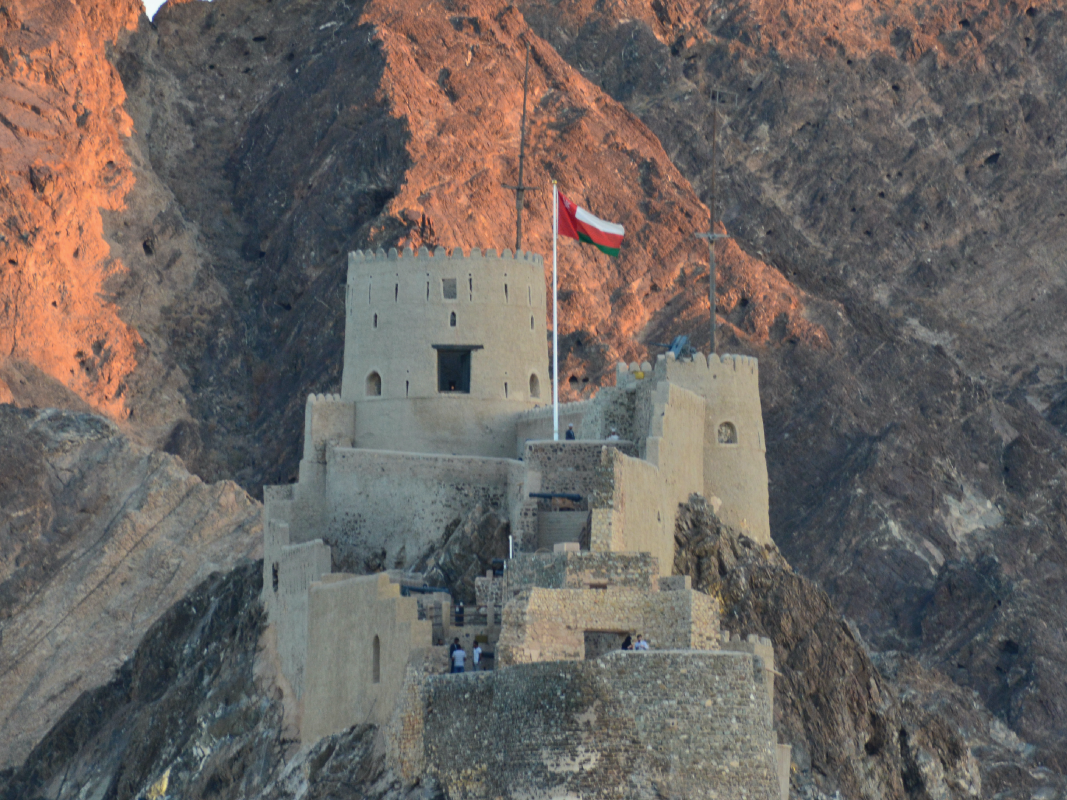
Guardians of Nature and Sustainability
As the world faces mounting environmental challenges, Oman has made sustainability a national priority. The country’s vast natural beauty — from the rugged Hajar Mountains and turquoise wadis to its pristine coastline — has inspired a growing movement toward eco-tourism and conservation.
Initiatives such as the Oman Vision 2040 Sustainability Strategy, the development of green hydrogen projects, and the promotion of renewable energy demonstrate the country’s dedication to a cleaner future. Protected areas like the Arabian Oryx Sanctuary and Ras Al Jinz Turtle Reserve symbolize Oman’s role as a guardian of biodiversity.
Oman’s cities are also evolving with green architecture, recycling programs, and sustainable community planning. The goal is not just to modernize but to do so responsibly — ensuring that progress never comes at the expense of the environment.
The Soul of the People
At the heart of Oman’s success lies its people — resilient, respectful, and forward-thinking. From artisans and entrepreneurs to educators and engineers, Omanis are redefining what it means to be both traditional and modern. The younger generation, especially, carries the torch of innovation with pride, contributing to technology startups, creative industries, and social enterprises that reflect the country’s evolving identity.
Community remains a powerful thread in the fabric of Omani life. Whether through national celebrations, Friday gatherings, or acts of quiet generosity, Omanis uphold values of unity and compassion that continue to shape their society.
Tourism: Welcoming the World
Oman’s tourism sector has emerged as one of its most promising frontiers — inviting visitors to experience a land of natural wonder and cultural depth. The Sultanate’s focus on sustainable, experience-based tourism is transforming it into a world-class destination. From luxury desert camps in Wahiba Sands to mountain lodges in Jabal Akhdar and eco-resorts along the Arabian Sea, Oman offers an authenticity rarely found elsewhere.
Events celebrating the National Day often see the country bathed in red, white, and green — with parades, fireworks, and a contagious spirit of pride. It’s a time when locals and expatriates alike join to honor the land that continues to inspire harmony and hope.
Looking Ahead: The Promise of the Future
As Oman steps into its 55th year of renaissance, the nation’s spirit remains unwavering — proud of its past, confident in its present, and optimistic about its future. The Sultanate continues to invest in digital transformation, education, and sustainable development, ensuring that every citizen has a role in shaping tomorrow’s Oman.
Oman’s story is one of grace, perseverance, and unity — a reminder that true progress is not measured merely by skyscrapers or statistics but by the values that sustain a nation’s soul.
A Nation United in Pride
This National Day, as the Omani flag flutters across mountain peaks and coastal horizons, it symbolizes more than a milestone — it embodies a shared dream. A dream of harmony between past and future, between people and nature, and between vision and action.
At 55, Oman stands not just as a nation that has evolved — but as one that continues to inspire the world with its balance, beauty, and belief in harmony.
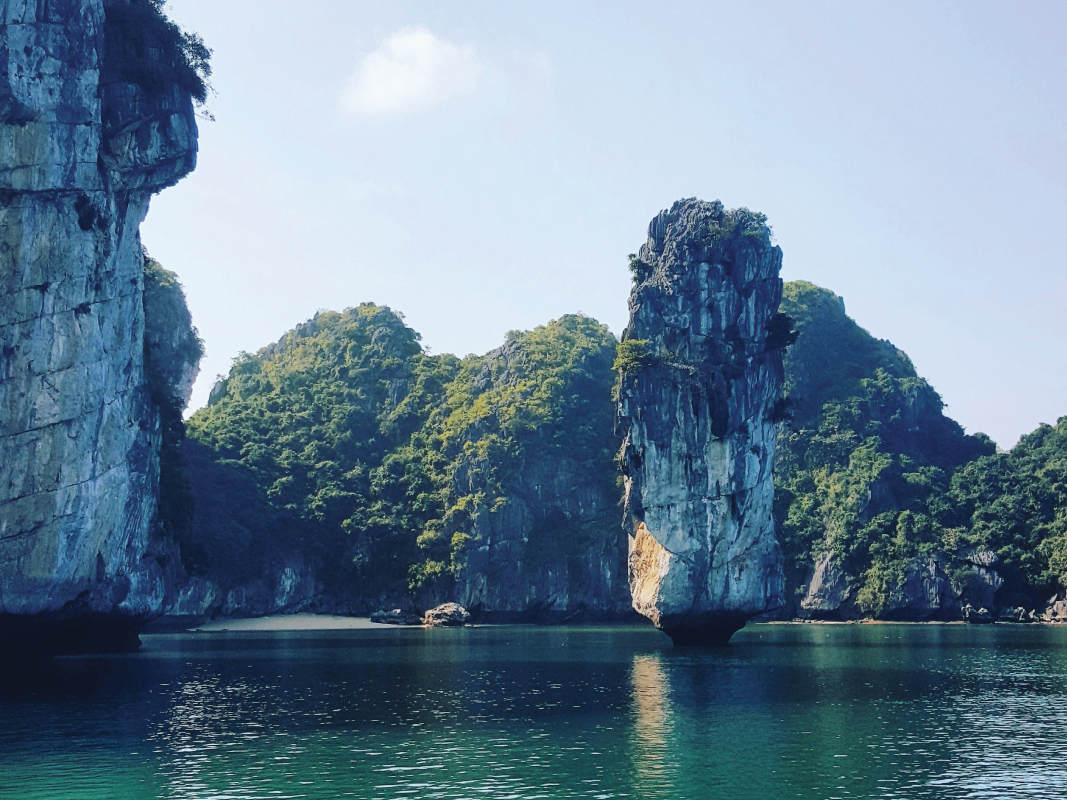
Vietnam Unveiled: From Ha Long Bay to Hoi An – The Soul of Southeast Asia
“Vietnam Unveiled: From Ha Long Bay to Hoi An – The Soul of Southeast Asia”
A captivating travelogue exploring Vietnam’s scenic landscapes, street food culture, ancient towns, and new luxury tourism trends attracting GCC travelers.
Words – Austin
Vietnam — a country where emerald-green rice terraces kiss the clouds, lanterns dance in the twilight, and the aroma of street food weaves through every alley. Long regarded as one of Asia’s most enchanting yet understated destinations, Vietnam is now fast emerging as a top travel choice for GCC tourists, offering the perfect blend of cultural depth, natural beauty, and world-class hospitality.
From the misty limestone pillars of Ha Long Bay to the golden charm of Hoi An, Vietnam is a tapestry of history and harmony — a country that invites travelers not just to visit, but to feel.
A Land of Breathtaking Contrasts
Stretching over 3,000 kilometers along the South China Sea, Vietnam’s geography is as diverse as its heritage. The north, defined by its mountain ranges and temperate climate, offers cool escapes like Sa Pa and the UNESCO-listed Ha Long Bay — a stunning seascape of 1,600 limestone islands rising from tranquil emerald waters.
A cruise through Ha Long Bay remains one of Asia’s most magical experiences. Whether aboard a luxury junk boat or a private yacht, travelers can drift past hidden lagoons, kayak through ancient caves, and dine under a canopy of stars. For GCC visitors, these cruises now offer halal-friendly menus, private cabins, and bespoke concierge services, catering to luxury expectations while respecting cultural preferences.
Further south, the scenery transforms — from the fertile Mekong Delta’s floating markets to the bustling urban rhythm of Ho Chi Minh City (Saigon). Vietnam’s beauty lies in these contrasts — a harmonious coexistence of serenity and energy.
Hoi An: The Heartbeat of Heritage
If Ha Long Bay is Vietnam’s natural masterpiece, Hoi An is its soul. This ancient trading port, once a hub for merchants from Arabia, Japan, and Europe, still radiates the warmth of cultural exchange. Today, its cobbled lanes glow beneath a thousand silk lanterns, its yellow-painted shop-houses whispering stories from centuries past.
By day, Hoi An enchants with tailor shops, riverside cafés, and traditional craft villages. By night, it transforms into a dreamscape — the Thu Bon River illuminated by floating candles and reflections of colorful lanterns. The city’s Night Market offers everything from handmade souvenirs to mouth-watering local snacks like banh mi and cao lau noodles.
For GCC travelers, Hoi An offers the ideal blend of romance, family comfort, and spiritual calm, with boutique resorts like Four Seasons Nam Hai and Anantara Hoi An offering private villas, halal dining options, and serene spa experiences.
The Allure of Street Food and Culinary Exploration
Vietnam’s street food culture is legendary — a living theatre of flavors where every dish tells a story. From the iconic pho (noodle soup) and banh xeo (crispy pancakes) to goi cuon (fresh spring rolls) and rich Vietnamese coffee, the culinary scene is as authentic as it is diverse.
The joy of Vietnam’s cuisine lies in its simplicity — fresh ingredients, balanced flavors, and deep respect for craft. In bustling cities like Hanoi and Ho Chi Minh City, travelers can join guided food tours that cater to dietary preferences, including halal and vegetarian options, making it easier for GCC visitors to indulge confidently in local tastes.
Luxury Tourism on the Rise
In recent years, Vietnam has evolved into one of Asia’s most refined luxury destinations. High-end resorts now dot the coastline — from the secluded Amanoi in Ninh Thuan to InterContinental Da Nang Sun Peninsula Resort, designed by renowned architect Bill Bensley.
These resorts blend world-class comfort with a strong sense of place, offering experiences like private yacht charters, jungle treks, holistic wellness retreats, and sunrise yoga overlooking the South China Sea. For GCC travelers seeking exclusivity, privacy, and a balance between adventure and relaxation, Vietnam’s luxury scene delivers with understated elegance.
Additionally, direct flight connections from the Gulf via carriers like Qatar Airways, Emirates, and Oman Air have made Vietnam more accessible than ever. With visa-friendly policies and a growing awareness of halal tourism, the destination is positioning itself as a gateway to authentic Southeast Asia for GCC residents.
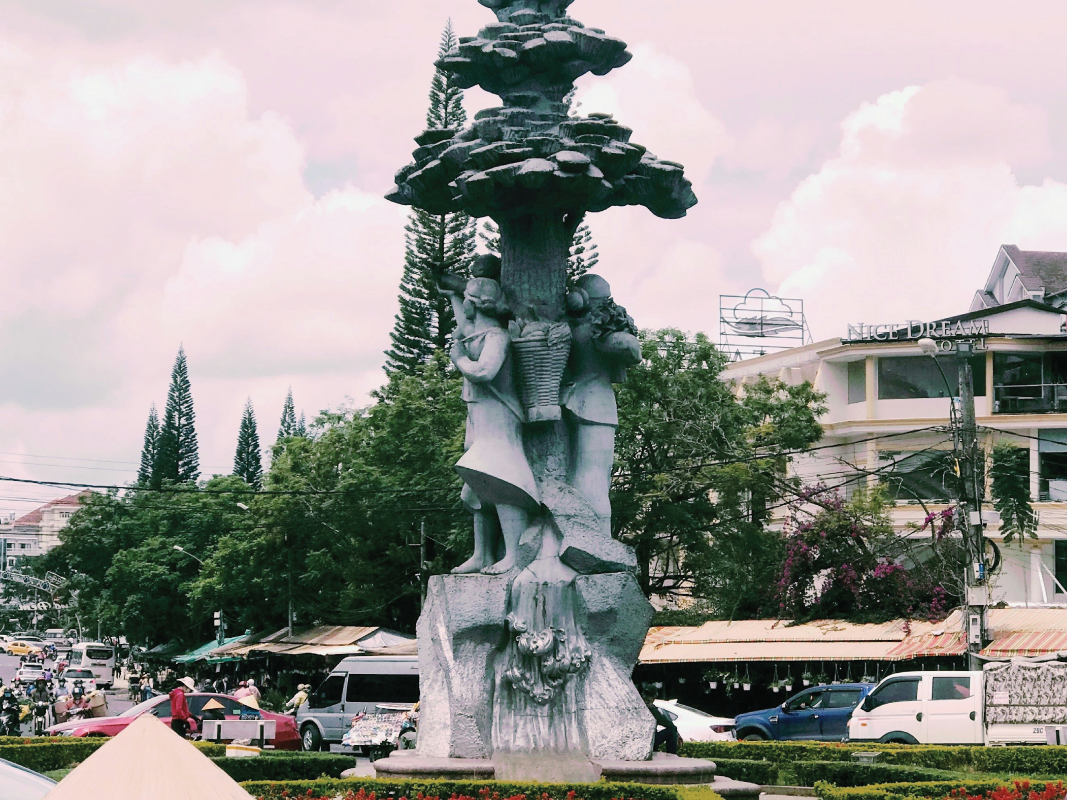
Nature and Serenity Beyond the Cities
Beyond the famous destinations, Vietnam reveals hidden corners of paradise. The Phong Nha-Ke Bang National Park, home to the world’s largest cave — Son Doong — offers a thrilling expedition for adventure seekers. The Da Lat Highlands, often called the “City of Eternal Spring,” enchants with waterfalls, pine forests, and French colonial charm.
Beach lovers will find bliss in Phu Quoc Island, with its pristine white sands and luxury beachfront resorts, while Ninh Binh, sometimes referred to as “Ha Long Bay on land,” offers a surreal landscape of karst mountains and ancient temples.
Each destination showcases a different facet of Vietnam’s identity — tranquil, spiritual, and deeply connected to nature.
Hospitality with Heart
What makes Vietnam truly unforgettable, however, is its people. Polite, resilient, and deeply hospitable, the Vietnamese exude a quiet warmth that makes travelers feel at home. Whether sharing a cup of jasmine tea in a countryside home or being greeted by a smile in a local market, visitors find themselves touched by genuine kindness.
The country’s tourism industry, known for its attentive service and cultural sensitivity, is increasingly catering to global travelers from the GCC, offering private experiences, wellness-oriented stays, and family-friendly activities that align with regional travel preferences.
Vietnam Awaits
Vietnam’s charm lies not in grand displays but in the subtle poetry of its everyday life — fishermen casting nets at dawn, monks walking barefoot through ancient temples, and children releasing lanterns onto quiet rivers. It’s a place that invites reflection, discovery, and connection.
For travelers from Oman, the UAE, Qatar, and beyond, Vietnam offers a journey that’s more than just a vacation — it’s a sensory and spiritual encounter with one of Asia’s most soulful destinations.
As Vietnam unveils itself to the world with renewed confidence, it remains a timeless reminder that true beauty often resides in simplicity — in the gentle sway of a palm tree, the laughter of a local vendor, or the aroma of coffee drifting through a morning market.
Vietnam — where heritage meets hospitality, and every traveler leaves with a piece of its soul.
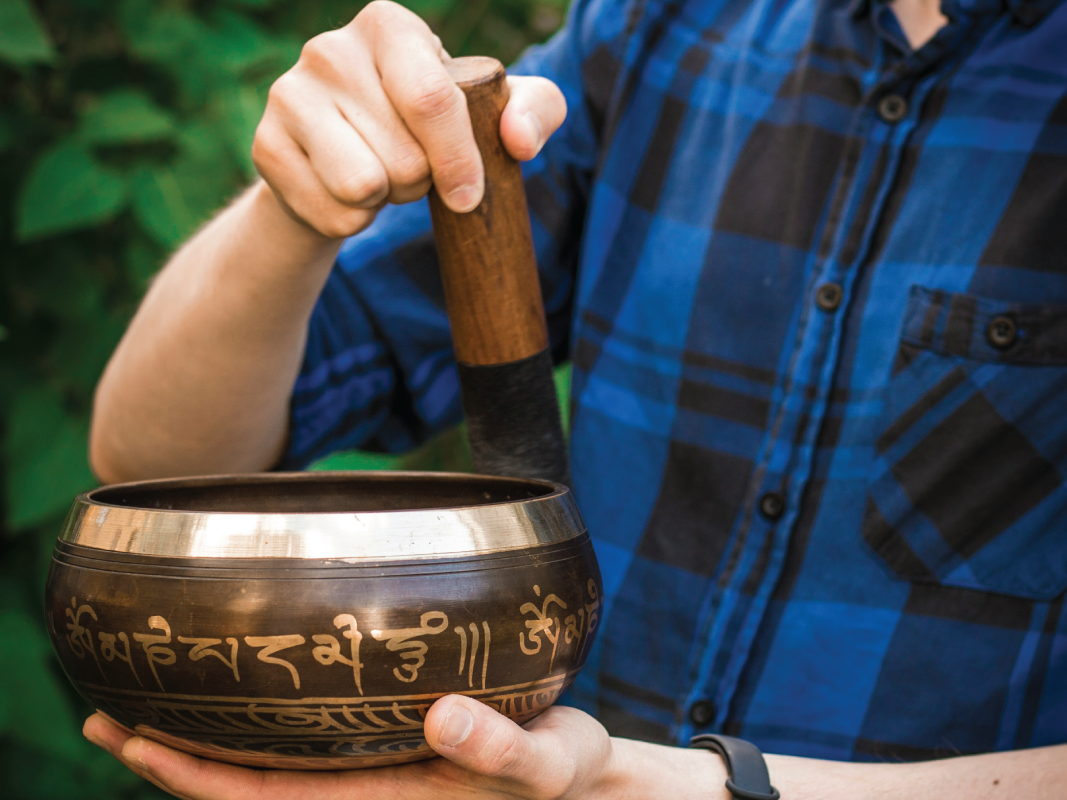
The Art of Slow Living: Finding Balance in a Fast-Paced World
“The Art of Slow Living: Finding Balance in a Fast-Paced World” – An inspiring read on embracing mindfulness, wellness, and intentional living — featuring wellness retreats and global trends in conscious lifestyle of the GCC residents.
Words – Austin
In a world dominated by notifications, deadlines, and endless connectivity, the concept of slow living has emerged as both a sanctuary and a lifestyle choice. It’s more than a trend — it’s a conscious decision to pause, reflect, and embrace life at a more intentional pace. For residents of the GCC, where fast-paced urban living and ambitious professional schedules are the norm, slow living offers a pathway to balance, wellness, and fulfillment.
Understanding Slow Living
At its core, slow living is about mindfulness, presence, and intention. It’s about making deliberate choices — from the food you eat, to the way you work, to the moments you dedicate to yourself and your loved ones. Unlike the hustle-driven culture that glorifies multitasking, slow living encourages depth over speed, quality over quantity, and experiences over possessions.
In the GCC, the rise of wellness-conscious communities and lifestyle shifts towards sustainability and mental well-being have made slow living increasingly relevant. It’s not about abandoning modern life; rather, it’s about curating a life that aligns with your values, health, and happiness.
Mindfulness and Daily Rituals
One of the simplest ways to adopt slow living is through mindfulness — the practice of being fully present in each moment. Whether it’s sipping a cup of Omani frankincense-infused tea in the morning, meditating by the sea in Abu Dhabi, or taking a quiet stroll through Dubai’s desert landscapes, mindfulness helps anchor the mind and reduce stress.
Daily rituals, however small, play a significant role. Journaling, yoga, deep-breathing exercises, and conscious eating are examples of micro-practices that GCC residents are increasingly incorporating into their routines. The result is not just relaxation but enhanced focus, creativity, and emotional resilience.
Wellness Retreats: Escaping to Recharge
For those seeking a more immersive experience, wellness retreats in the GCC and abroad offer transformative escapes. Destinations in Oman, UAE, and Qatar have begun to integrate holistic wellness programs that combine nature, mindfulness, fitness, and nutrition.
- Oman’s Hajar Mountains provide serene locations for yoga retreats, meditation, and outdoor hiking, allowing guests to reconnect with nature and themselves.
- Dubai and Abu Dhabi host luxury wellness resorts like Six Senses Zighy Bay and Al Maha Desert Resort, where guests indulge in spa therapies, personalized nutrition plans, and mindfulness workshops while surrounded by pristine landscapes.
- In Qatar, Seaside wellness sanctuaries blend traditional therapies with modern approaches to mental and physical health, offering a perfect balance between luxury and holistic healing.
These retreats are not just about relaxation; they encourage guests to slow down, reassess priorities, and cultivate sustainable habits for long-term well-being.
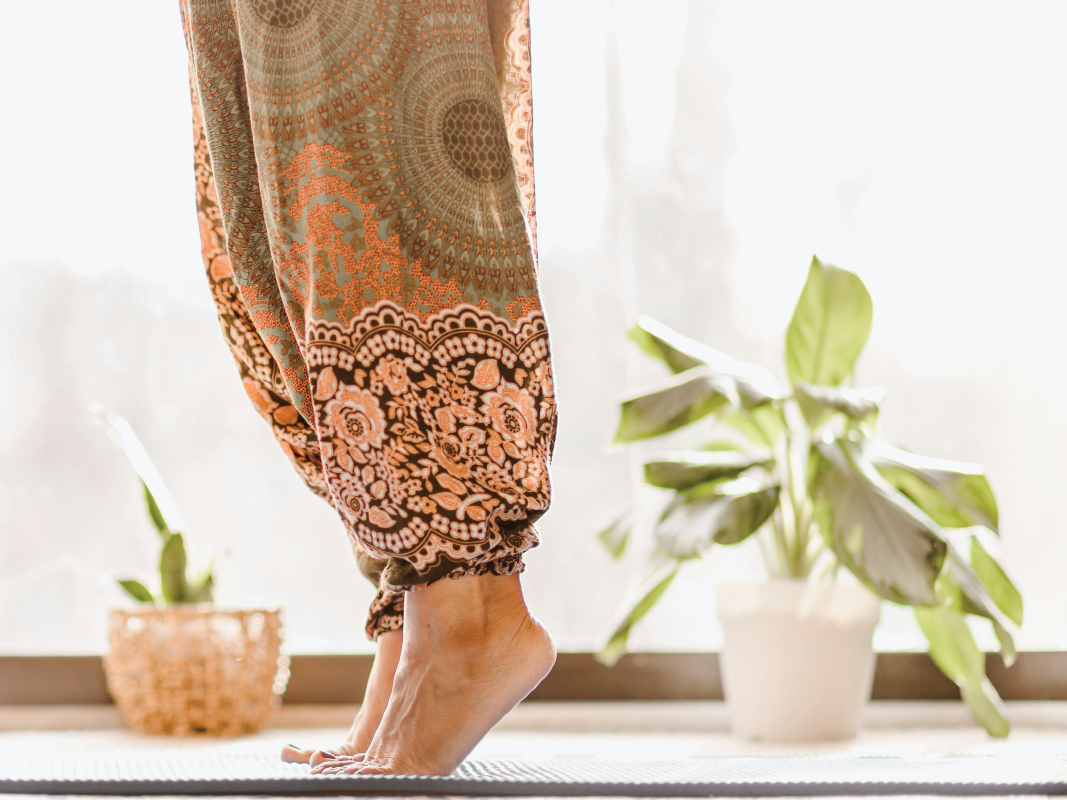
Intentional Living: Redefining Success
Slow living also challenges the GCC’s conventional definitions of success, which often prioritize material wealth and career achievements. Intentional living emphasizes quality of experience and alignment with personal values. It’s about designing a lifestyle that nourishes the mind, body, and soul.
For GCC residents, this could mean embracing home-grown sustainability initiatives, such as organic gardening, mindful consumption, or supporting eco-conscious brands. It also means fostering relationships, investing in experiences rather than possessions, and carving out time for reflection and creativity.
Global Trends Influencing the GCC
Slow living is no longer confined to wellness retreats or countryside escapes; it is influencing urban lifestyles worldwide, including in the GCC. Some notable global trends include:
- Digital Detox: Limiting screen time and social media engagement to reclaim mental clarity.
- Mindful Travel: Choosing travel experiences that prioritize local culture, sustainability, and personal enrichment over rushed sightseeing.
- Conscious Consumption: Supporting brands and practices that are environmentally responsible, ethical, and aligned with personal wellness goals.
- Work-Life Integration: Encouraging flexible schedules, remote work, and periodic sabbaticals to focus on mental and emotional health.
Many GCC luxury hotels, wellness centers, and lifestyle brands are adopting these trends, making slow living a practical and aspirational choice for residents.
The Benefits of Slowing Down
The benefits of embracing slow living are both tangible and intangible. Residents report improvements in mental clarity, emotional resilience, and physical health. Mindful eating promotes better digestion and dietary habits, while regular meditation reduces anxiety and enhances focus.
Slow living also fosters deeper social connections. Shared experiences, whether at a family dinner, a community yoga class, or a reflective retreat, help cultivate empathy, gratitude, and a sense of belonging.
Moreover, it encourages sustainability — by valuing quality over quantity, individuals make choices that reduce waste, conserve resources, and honor the environment. In a region witnessing rapid urbanization and consumerism, slow living offers a pathway to harmony with both people and the planet.
Incorporating Slow Living into Daily Life
Embracing slow living doesn’t require dramatic life changes. Some practical steps include:
- Starting the day with mindful meditation or journaling.
- Scheduling tech-free hours to focus on reading, reflection, or family time.
- Planning weekend retreats or nature escapes within the GCC.
- Engaging in creative hobbies such as painting, cooking, or gardening.
- Making conscious choices in food, fashion, and lifestyle that reflect personal values.
By integrating these practices, GCC residents can achieve a balanced lifestyle that nourishes both the mind and the soul, even amid urban pressures and global connectivity.
A Lifestyle of Presence and Purpose
Slow living is ultimately a celebration of presence, purpose, and authenticity. It’s a lifestyle that acknowledges that life is not a race, but a journey — a journey best enjoyed with intention, awareness, and gratitude.
In the fast-paced cities of the GCC, where ambition and growth often dominate, slow living is a gentle reminder to pause, breathe, and reconnect with what truly matters. Whether through mindful routines, immersive wellness retreats, or conscious lifestyle choices, residents are discovering that slowing down can actually propel them toward a richer, more meaningful life.
In a world racing forward, embracing slow living is an act of courage — a choice to honor oneself, one’s community, and the planet.
Slow down, savor the moment, and let life unfold with purpose — that is the art of living well.

Desert Chic: How Arabian Aesthetics Are Inspiring Modern Fashion
“Desert Chic: How Arabian Aesthetics Are Inspiring Modern Fashion” – A fashion story blending traditional GCC design motifs and textiles with contemporary global trends — featuring local designers redefining Arabian elegance.
Words – Austin
In the heart of the Arabian Peninsula, where deserts stretch to the horizon and cities shimmer with modernity, a new fashion narrative is emerging — one that seamlessly blends traditional GCC aesthetics with contemporary global design. This is Desert Chic, a style that celebrates heritage, luxury, and creativity, redefining what it means to dress with elegance in the 21st century.
The Essence of Arabian Elegance
Arabian fashion has always been a reflection of culture, climate, and history. Flowing abayas, intricate embroidery, delicate jewelry, and rich fabrics were more than clothing — they were symbols of identity, status, and artistry. Today, these traditional elements are being reinterpreted for the modern wardrobe, retaining their symbolic significance while embracing innovation.
Desert Chic is characterized by neutral tones, flowing silhouettes, luxurious fabrics, and hand-crafted details. It draws inspiration from the desert sands, the play of sunlight on dunes, and the geometric patterns found in traditional architecture and textiles. This aesthetic translates beautifully into both ready-to-wear and haute couture, offering pieces that are timeless yet contemporary.
Local Designers Leading the Movement
Across the GCC, designers are taking the essence of Arabian elegance and reimagining it for global audiences.
- In Dubai, emerging talents like Abeer Al Suwaidi and Huda Al Nuaimi are blending traditional embroidery techniques with minimalist silhouettes, creating collections that resonate both locally and internationally.
- Saudi Arabia’s fashion scene has witnessed a renaissance with designers such as Raghad Al Khuzai embracing sustainable fabrics while incorporating intricate mashrabiya-inspired patterns into modern dresses and separates.
- Omani designers, like Lama Al Sulaimi, are using indigenous textiles, silver detailing, and desert-inspired color palettes to create bespoke pieces that celebrate local heritage while appealing to cosmopolitan tastes.
These designers are redefining luxury, not only through material richness but through storytelling and craftsmanship. Every stitch, pattern, and drape reflects the region’s cultural narrative, making fashion a bridge between tradition and modernity.
Textiles and Craftsmanship: A Heritage Revived
A key element of Desert Chic is the revival of traditional textiles and techniques. Handwoven silks, embroidered linens, and delicate gold threads are finding their way into contemporary collections. These fabrics are often paired with modern tailoring, innovative cuts, and versatile designs that cater to both formal occasions and everyday elegance.
The resurgence of artisanal crafts is not just about aesthetics; it’s also about sustainability and ethical fashion. Many GCC designers are collaborating with local artisans, ensuring that age-old techniques are preserved while providing livelihoods for craft communities. This approach aligns with global luxury trends where consumers increasingly value authenticity, provenance, and purpose in their wardrobe choices.
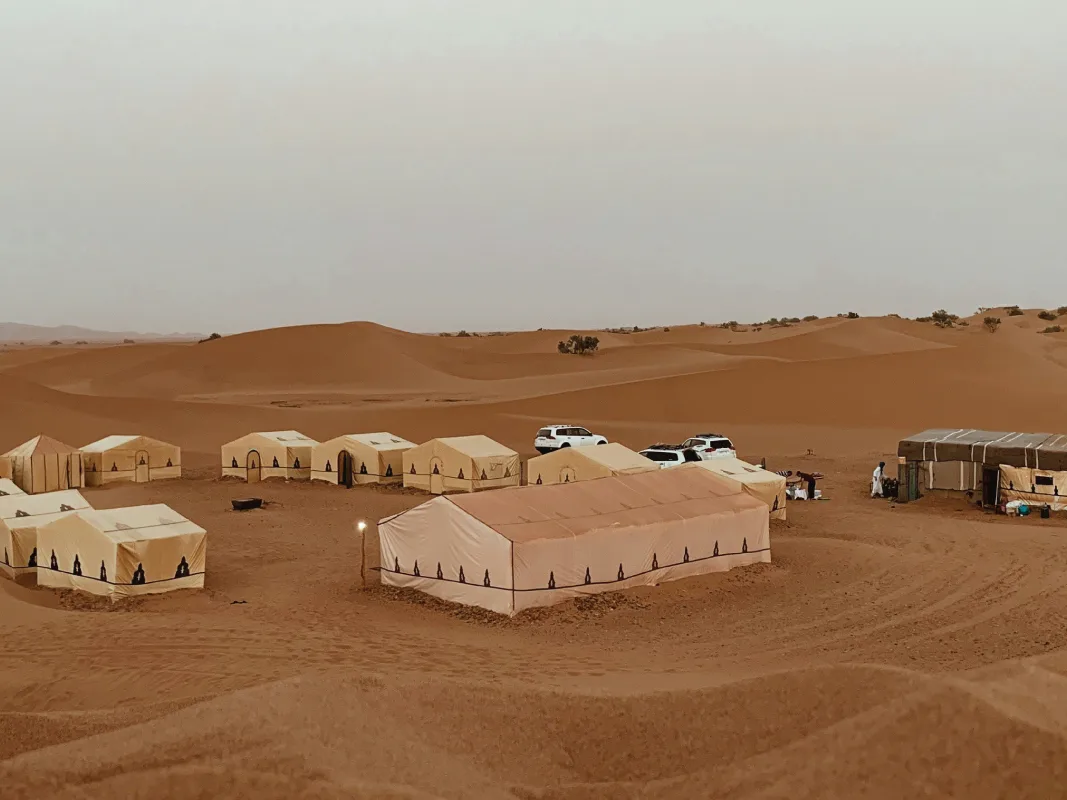
Global Trends Meet Desert Inspiration
Desert Chic is not confined to the GCC — it has captured the attention of international fashion circles. Global trends such as minimalism, sustainability, and gender-fluid fashion are merging with Arabian motifs and desert-inspired color palettes. The result is a versatile aesthetic that works across seasons, continents, and cultures.
Neutral hues reminiscent of the desert — soft sand, terracotta, muted gold, and camel — dominate collections, often accented with metallic threads, geometric embroidery, or gemstone detailing. Silhouettes remain fluid and elegant, allowing the garments to flow naturally, echoing the movement of desert winds.
Additionally, accessories have become a key element of Desert Chic. Statement jewelry, embroidered belts, and artisan handbags complement the attire while reflecting traditional design principles in a modern context.
Redefining Arabian Style for Everyday Life
Desert Chic is not limited to runway fashion; it’s also influencing street style, corporate wear, and casual luxury. In cities like Riyadh, Doha, and Abu Dhabi, professionals are embracing pieces that balance cultural heritage with contemporary practicality. For example:
- An embroidered abaya with a minimalist cut paired with sleek heels for boardroom meetings.
- Linen kaftans styled with statement belts and sandals for weekend leisure.
- Tailored jackets featuring subtle desert-inspired patterns over neutral trousers for a modern, professional look.
This versatility makes Desert Chic highly relevant for GCC residents, who are increasingly seeking fashion that honors their roots while meeting the demands of modern life.
The Role of Fashion Weeks and Digital Platforms
GCC fashion weeks — in Riyadh, Dubai, and Doha — have become powerful platforms for designers to showcase Desert Chic to a global audience. The events highlight cultural storytelling, craftsmanship, and innovation, attracting buyers, influencers, and fashion enthusiasts worldwide.
Social media and e-commerce platforms further amplify this trend, allowing designers to reach international markets and connect directly with consumers. Instagram, TikTok, and specialized fashion platforms showcase behind-the-scenes craftsmanship, exclusive collections, and lifestyle inspiration, making Desert Chic accessible and aspirational.
The Future of Desert Chic
The evolution of Desert Chic signals a larger shift in global fashion — one where tradition is celebrated, sustainability is embraced, and cultural identity becomes a source of creative inspiration. For GCC residents, this trend is more than a style statement; it is a reflection of pride, heritage, and individuality.
As more designers experiment with fusion collections, innovative fabrics, and cross-cultural collaborations, Desert Chic will continue to grow as a signature style of the region, representing a modern, confident, and culturally rooted GCC aesthetic.
Desert Chic is the perfect embodiment of Arabian elegance in a globalized world — a harmonious blend of heritage, artistry, and contemporary design. It honors the past while embracing the future, offering fashion that is meaningful, luxurious, and distinctly GCC.
From flowing abayas to tailored ensembles, from hand-embroidered textiles to minimalistic modern cuts, Desert Chic tells a story — one of resilience, beauty, and cultural pride. In a world where trends come and go, this aesthetic stands as a testament to the enduring allure of Arabian sophistication.
For GCC residents and fashion enthusiasts alike, Desert Chic is more than clothing — it’s a statement of identity, artistry, and timeless elegance.
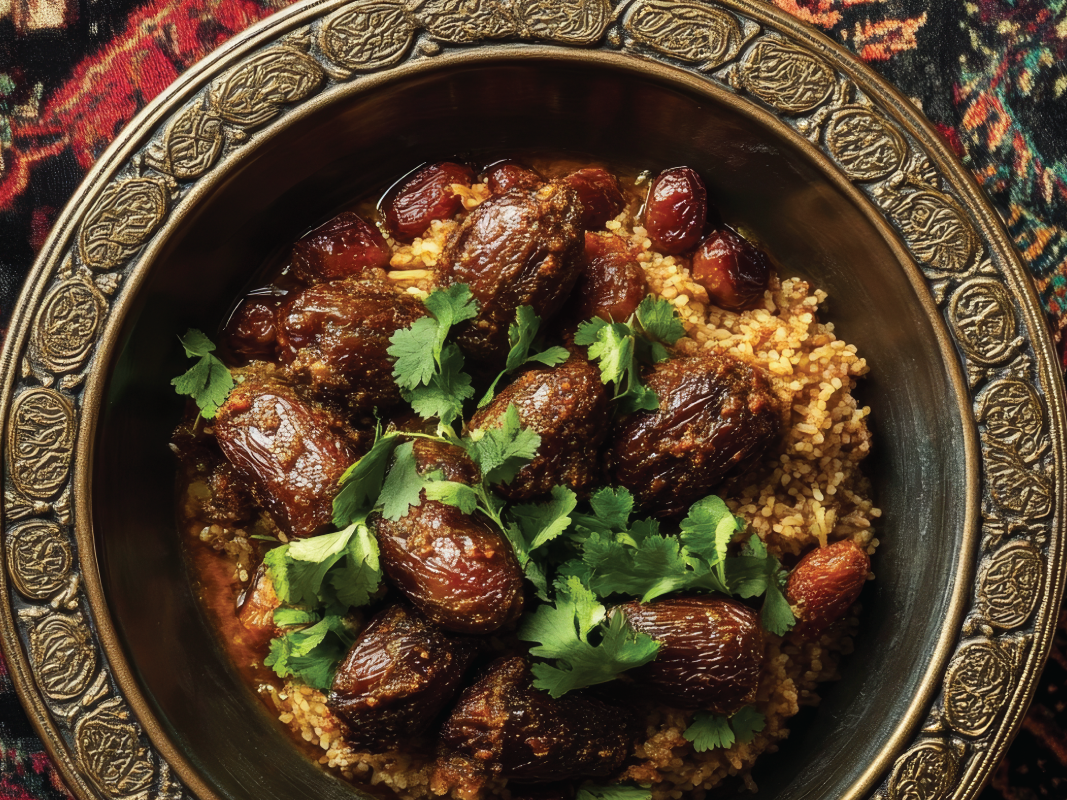
Flavors of Arabia The Rise of GCC Cuisine on the Global Stage
“Flavors of Arabia – The Rise of GCC cuisine on the Global Stage” – A culinary exploration celebrating traditional dishes and new GCC chefs putting local flavors into fine dining and fusion concepts.
Words – Austin
The Gulf Cooperation Council (GCC) region is home to a rich culinary tapestry that spans deserts, coasts, and oasis towns. Rooted in centuries of trade, cultural exchange, and local traditions, GCC cuisine has long been admired for its aromatic spices, bold flavors, and communal spirit. Today, it is stepping confidently onto the global stage, as chefs and culinary innovators elevate traditional dishes into fine dining and fusion concepts, blending heritage with contemporary flair.
A Rich Heritage of Flavor
GCC cuisine reflects the geography, climate, and history of the region. Coastal areas offer fresh seafood, often marinated with spices brought by ancient trading vessels, while inland dishes celebrate lamb, chicken, and seasonal vegetables, accompanied by fragrant rice, bread, and slow-cooked stews.
Signature dishes such as Kabsa, Machboos, and Harees are central to Gulf kitchens. These meals, often cooked with patience and precision, combine aromatic spices like saffron, cardamom, and dried limes with local ingredients to create flavors that are uniquely regional. Sweet treats, including Luqaimat and Halwa, showcase the Gulf’s rich confectionery heritage, delighting locals and visitors alike.
What distinguishes GCC cuisine is its balance of bold flavors with subtle sophistication. Each dish tells a story — of family gatherings, festive celebrations, and a deep connection to land, sea, and tradition.
Modern Chefs, Traditional Roots
In recent years, a new generation of GCC chefs has emerged, bringing traditional flavors into the world of fine dining and global fusion. These culinary innovators honor heritage while experimenting with presentation, textures, and international cooking techniques.
- In Saudi Arabia, chefs are reimagining traditional dishes with modern plating and international influences, introducing locally inspired tasting menus that appeal to both domestic and global audiences.
- Emirati chefs in Dubai and Abu Dhabi are elevating street classics such as Shawarma and Balaleet into gourmet experiences at luxury resorts and boutique restaurants.
- Omani, Qatari, and Bahraini chefs are using indigenous ingredients, spices, and seafood to create fusion menus that pair local flavors with Mediterranean, Asian, and European techniques.
These chefs are redefining what it means to experience Gulf cuisine, turning it into a culinary art form that resonates worldwide.
Fusion Cuisine and Innovation
Fusion has become a defining trend for GCC chefs who aim to bridge tradition and modernity. Imagine saffron-infused risottos paired with slow-cooked Kabsa, or date and rosewater desserts reinterpreted with French patisserie techniques. These innovative combinations retain the essence of Gulf flavors while appealing to global palates and contemporary dining expectations.
Many chefs also emphasize sustainable sourcing, collaborating with local farmers, fishers, and spice producers. This not only ensures freshness and authenticity but also strengthens the region’s culinary ecosystem, giving GCC cuisine a meaningful story to tell internationally.
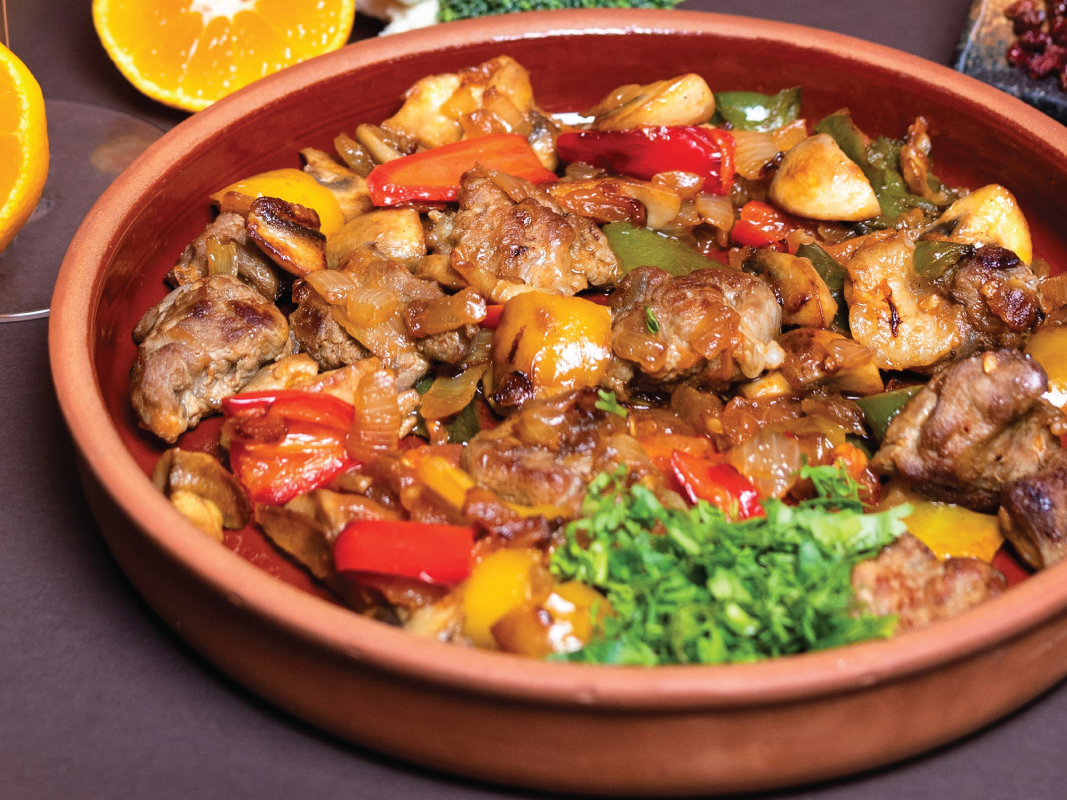
From Street Food to Luxury Dining
While fine dining elevates GCC flavors, street food and home-style cooking remain the soul of the region. From bustling markets in Riyadh and Muscat to the lively souqs of Dubai and Manama, everyday specialties like Falafel, Samboosa, and grilled fish continue to captivate locals and tourists alike.
This growing attention to authentic, local experiences has caught the eye of international food enthusiasts. Culinary tours, cooking workshops, and festival showcases now allow visitors to experience GCC flavors beyond traditional restaurant settings, blending street-style authenticity with fine dining sophistication.
Global Recognition and Culinary Tourism
GCC cuisine is increasingly making its presence felt on the international stage. Culinary festivals, hotel pop-ups, and Michelin-inspired dining experiences highlight the versatility of local flavors, from traditional Kabsa to modern seafood creations.
Luxury resorts and boutique hotels across the region are offering curated culinary experiences — private cooking sessions with top chefs, guided spice market tours, and tasting menus that showcase the diversity of Gulf ingredients. This approach not only strengthens GCC cuisine’s reputation but also positions the region as a must-visit destination for culinary tourism.
Preserving Heritage Through Innovation
At the heart of GCC cuisine lies a strong sense of community and heritage. Recipes are passed down through generations, and meals are central to family life, celebrations, and hospitality. Even as chefs innovate and modernize, they remain committed to preserving traditional techniques, flavor profiles, and cultural significance.
Cooking workshops, culinary schools, and family-run restaurants are crucial in this effort, ensuring that the region’s food heritage continues to thrive while adapting to contemporary tastes.
The Future of GCC Cuisine
The rise of GCC cuisine on the global stage signals a new era for the region’s culinary identity. As chefs experiment with fusion, sustainability, and international techniques, GCC flavors are poised to influence global dining trends while maintaining their authenticity and cultural pride.
The essence of Gulf cooking — aromatic spices, fresh ingredients, communal dining, and intricate preparation — ensures that each dish tells a story of tradition, hospitality, and innovation. With growing recognition, GCC cuisine is becoming a source of cultural diplomacy, attracting food enthusiasts, tourists, and chefs from across the world.
From bustling souqs to luxurious dining tables, from spice-scented kitchens to Michelin-inspired menus, GCC cuisine is flourishing. Its journey from regional comfort food to global gourmet recognition reflects a perfect blend of tradition and innovation.
For residents and travelers alike, exploring GCC flavors is more than a culinary experience — it’s an immersion in heritage, culture, and the soul of the region. With new chefs, inventive fusion concepts, and international acclaim, GCC cuisine is poised to leave a lasting impression on the global culinary stage. The flavors of the Gulf are no longer a secret — they are a story, an experience, and a celebration shared with the world.
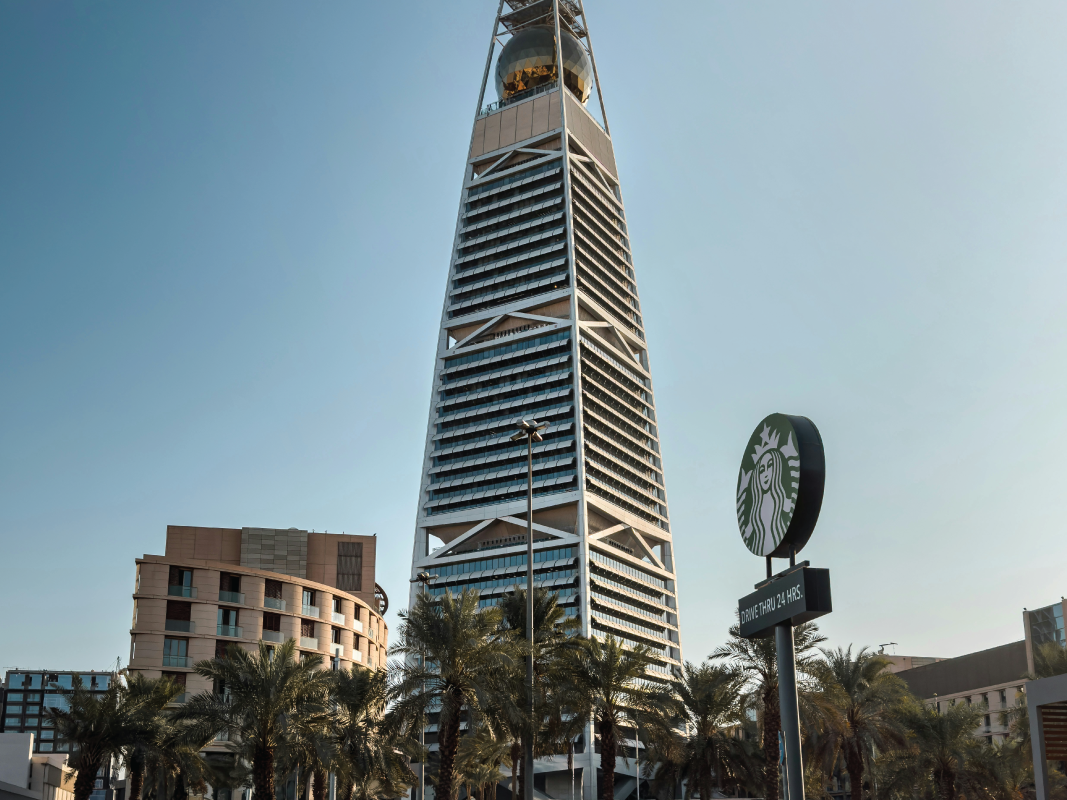
The Change Makers: Young GCC Visionaries Redefining Innovation & Creativity
“The Change Makers: Young GCC’s Redefining Innovation & Creativity” – Profiles of emerging entrepreneurs, artists, and visionaries shaping the Gulf’s creative and business landscape.
Words – Austin
The Gulf has always been a land of ambition — a place where desert horizons meet futuristic skylines, and tradition blends effortlessly with transformation. In recent years, a new generation of young changemakers across the GCC has emerged, redefining what it means to lead, create, and inspire in an ever-evolving world.
From visionary entrepreneurs and tech innovators to artists, designers, and sustainability advocates, these dynamic individuals are shaping the future of the Gulf’s creative and business landscape — proving that the region’s next era of growth will be driven not only by oil or infrastructure, but by imagination, innovation, and purpose.
A New Generation with a Global Mindset
Today’s GCC youth have grown up in an interconnected world. They are digitally fluent, globally exposed, and locally rooted. Many studied abroad, returning with new ideas and perspectives that they adapt to regional values.
What sets them apart is their mindset: they’re not just chasing success; they’re building ecosystems. They believe in sustainability, social impact, creativity, and collaboration — values that mirror the GCC’s broader vision for diversification and innovation.
Across the region, this spirit can be seen in how young leaders are transforming industries once considered traditional — from fashion and food to tech, education, and environmental conservation.
Entrepreneurs of the New Gulf
In cities like Dubai, Riyadh, Doha, and Muscat, start-ups are flourishing under the leadership of bold, forward-thinking youth.
- In Saudi Arabia, entrepreneurs are launching digital-first businesses in e-commerce, fintech, and AI, aligned with the Vision 2030 roadmap that emphasizes creativity and private-sector growth.
- In the UAE, platforms like AstroLabs and Hub71 are incubating young founders who are turning local challenges into scalable solutions — from sustainable fashion to health tech and smart mobility.
- Oman’s youth are entering entrepreneurship through innovation hubs such as The Authority for Small and Medium Enterprises Development (Riyada), building businesses rooted in culture, tourism, and sustainability.
- Qatari and Bahraini innovators are venturing into digital content creation, art collectives, and renewable energy — balancing profit with purpose.
This entrepreneurial momentum reflects a powerful truth: the Gulf’s youth are not waiting for opportunities — they are creating them.
The Creative Renaissance
The GCC is experiencing a creative awakening, led by young artists, filmmakers, musicians, and designers who are redefining the region’s cultural identity.
- In Dubai, art spaces like Alserkal Avenue have become hubs for young creatives exploring themes of identity, heritage, and global connectivity.
- Saudi artists, inspired by initiatives like Misk Art Institute and Diriyah Biennale, are merging digital media with traditional motifs to create a new artistic language for the Kingdom.
- Omani photographers and designers are showcasing local heritage through modern aesthetics, bridging the old and the new with authenticity and pride.
- Kuwait and Bahrain continue to nurture performing arts, literature, and indie music scenes, allowing young creatives to express themselves freely and connect across cultures.
This renaissance reflects a broader regional shift — where creativity is no longer just expression; it’s innovation, identity, and influence.
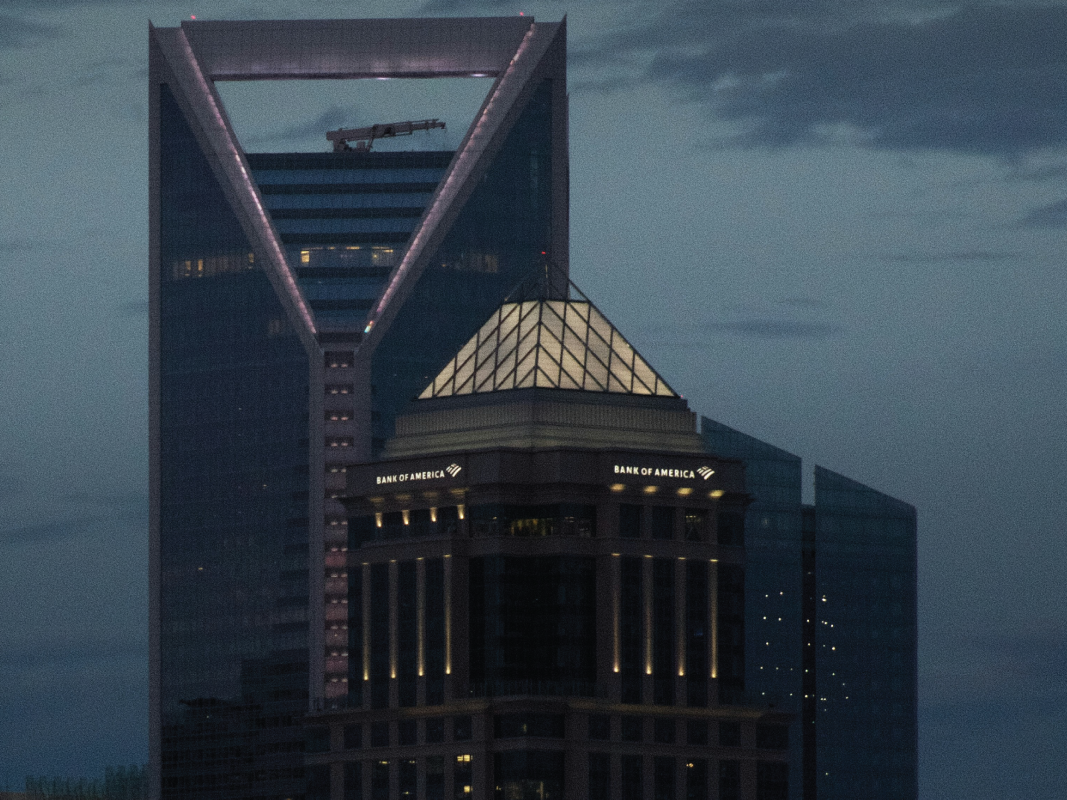
Tech, Sustainability & Social Impact
Beyond the arts, many young changemakers are driving sustainability and technology initiatives that align with the GCC’s vision for a greener, smarter future.
In Qatar and the UAE, youth-led ventures are exploring renewable energy, waste management, and sustainable construction. Saudi innovators are using AI and IoT to solve urban challenges, while Omani engineers and environmentalists are advocating for eco-friendly startups and community-based conservation programs.
Women, in particular, are taking center stage. Across the GCC, female founders and professionals are redefining leadership in sectors once dominated by men — tech, finance, logistics, and creative industries — proving that innovation knows no gender.
Their stories are inspiring a generation that values purpose over position and believes in progress that benefits both people and planet.
The Power of Collaboration
A defining characteristic of this new wave of Gulf changemakers is their collaborative spirit. They build communities, not silos. Whether it’s co-working spaces in Riyadh, pop-up art collectives in Muscat, or startup accelerators in Dubai, young innovators are creating platforms where ideas cross-pollinate and creativity thrives.
Social media has become their megaphone — a tool not just for visibility but for impact. Influencers and content creators are using digital platforms to promote sustainability, mental health awareness, and entrepreneurship — blending advocacy with aesthetics.
Through collaboration and digital storytelling, these changemakers are making the GCC’s creative economy more connected and inclusive than ever before.
Challenges & Resilience
The journey of innovation is not without its challenges. Many young GCC entrepreneurs face hurdles such as funding constraints, regulatory complexities, and the pressure to balance cultural expectations with creative freedom.
Yet, what defines this generation is resilience. They view setbacks as learning curves, not failures. Supported by government initiatives, incubators, and regional investors, they are gradually overcoming barriers and transforming ambition into achievement.
Their success stories — from start-up founders to visual artists — reflect a larger truth: the Gulf’s next economic and cultural revolution will be led by creativity and courage.
Looking Ahead: The Future is Gulf-Made
The rise of these young changemakers marks the dawn of a new era in the GCC — one defined by innovation, inclusivity, and imagination. As the world looks toward the Gulf for energy, technology, and investment, it will increasingly find something even more powerful: inspiration.
This generation of leaders is redefining what it means to be from the GCC — proud of their roots, open to the world, and determined to make an impact that transcends borders.
Their stories are proof that the Gulf is no longer just a destination for progress — it’s a source of creativity, entrepreneurship, and human potential.
The changemakers of the GCC are not waiting for the future — they are building it, one idea, one canvas, one startup, one song at a time.
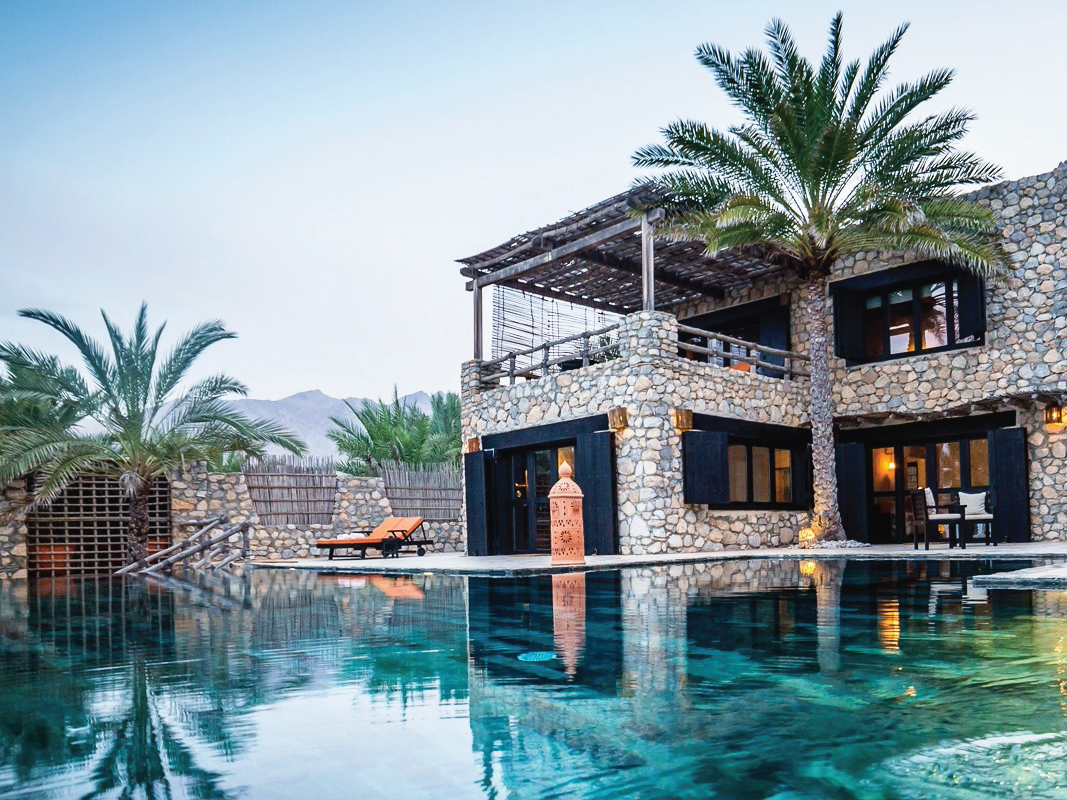
Homes with a View: GCC’s Coastal & Mountain Living Aesthetics
“Homes with a View: GCC’s Coastal & Mountain Living Aesthetics” – A feature on architectural and interior trends inspired by Gulfs natural beauty — spotlighting eco-resorts, villas, and design studios merging tradition with modernity.
Words – Austin
The GCC is a land of striking contrasts — from sun-kissed coastlines and turquoise waters to rugged mountains and desert dunes. These natural landscapes have long inspired not only lifestyles but also architecture and interior design, giving rise to homes and resorts that celebrate the beauty of the environment while embracing modern sophistication.
Today, GCC architects and interior designers are redefining living spaces, blending cultural heritage, sustainability, and contemporary design. The result is a unique aesthetic that resonates across villas, luxury resorts, and private residences — homes with a view, both literally and metaphorically.
Coastal Living: Seamless Integration with the Sea
The Gulf’s coastline — stretching from the UAE to Oman and Qatar — has inspired a wave of coastal living concepts that emphasize openness, light, and connection to nature.
Modern beachside villas often feature floor-to-ceiling windows, infinity pools, and terraces that extend into the landscape, allowing residents to enjoy uninterrupted views of the ocean. Interiors are typically minimalist yet luxurious, with neutral tones, natural wood, and stone accents reflecting the sand, waves, and coastal flora.
Local designers are blending traditional Arabian motifs — such as mashrabiya screens and geometric patterns — with contemporary materials. This creates a harmonious balance between privacy, cultural identity, and modern comfort.
Eco-conscious design is also central to coastal living in the GCC. Many developments incorporate solar energy, rainwater harvesting, and sustainable building materials, ensuring that luxury does not come at the expense of the environment. Resorts such as Six Senses Zighy Bay in Oman or The Ritz-Carlton in Dubai exemplify this approach, offering guests immersive experiences that combine wellness, design, and nature.
Mountain Retreats: Elevating Aesthetics and Tranquility
Beyond the coast, GCC mountains — from Oman’s Hajar range to the UAE’s Jebel Hafeet — provide inspiration for residential retreats and boutique resorts. Mountain homes prioritize panoramic vistas, natural ventilation, and seamless integration with the terrain.
Architectural trends in these regions often feature stone-clad facades, terraced layouts, and green roofs that blend structures into the landscape. Interiors echo the surrounding environment, using earthy tones, textured fabrics, and artisanal décor inspired by local heritage.
These mountain residences emphasize well-being and connection with nature. Designers incorporate outdoor living areas, meditation spaces, and gardens to create sanctuaries away from urban bustle. Villas in Muscat’s Al Hajar foothills or Ras Al Khaimah’s elevated resorts exemplify this philosophy, balancing modern luxury with eco-sensitivity.
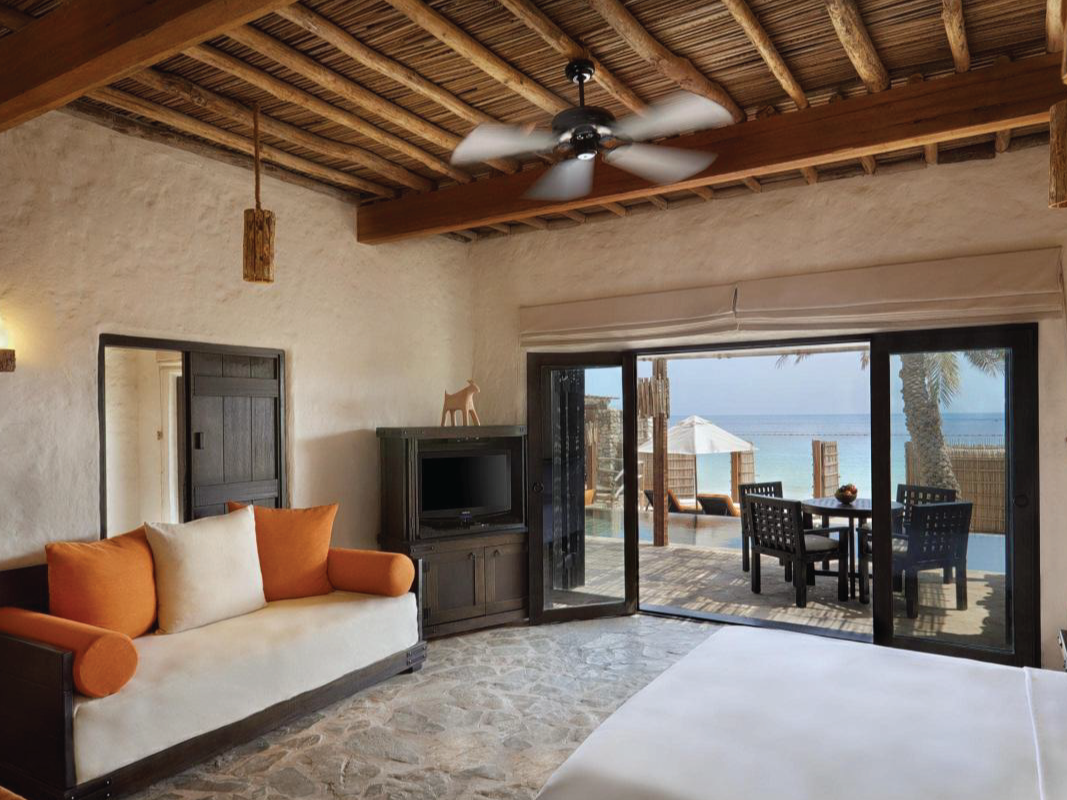
Tradition Meets Modernity
Across coastal and mountain regions, GCC design studios are exploring ways to fuse tradition with innovation. Classic architectural elements such as courtyards, arched windows, and intricate latticework are being reimagined with glass, steel, and modular layouts, creating homes that are at once timeless and contemporary.
Interior designers are similarly merging cultural storytelling with modern living. Handwoven textiles, locally crafted pottery, and calligraphic art adorn open-plan spaces, connecting residents to their heritage while complementing sleek furniture, smart home technology, and minimalistic finishes.
This approach is particularly evident in high-end villas and eco-resorts, where storytelling and functionality coexist. Designers emphasize not only aesthetics but also comfort, light, and sustainability, resulting in homes that feel both luxurious and rooted in place.
Eco-Resorts and the Experience Economy
The rise of eco-conscious luxury tourism in the GCC has influenced residential design trends as well. Resorts along Oman’s coast or UAE’s mountain retreats showcase architecture that responds to climate, topography, and cultural context, inspiring homeowners to emulate similar concepts in private estates.
Open-air lounges, natural ventilation systems, and locally sourced building materials are now standard in both commercial and private projects. Landscaping often features native flora, water features, and meditation gardens, enhancing the sense of connection to nature.
This “experience-first” design ethos reflects a shift in the GCC: homes are no longer just functional spaces but immersive environments that prioritize wellness, sustainability, and lifestyle.
Innovative Studios Shaping GCC Living
Design studios across the Gulf are leading the charge in coastal and mountain aesthetics.
- In Dubai, studios like LW Design Group and Kandilli Design are redefining luxury homes with light-filled interiors, sustainable materials, and bespoke furniture.
- In Oman, boutique design firms integrate traditional Omani craftsmanship with contemporary architecture, creating homes that feel authentic, modern, and environmentally conscious.
- In Saudi Arabia and Qatar, designers are incorporating smart-home technology and modular layouts into villas and penthouses while retaining a sense of Arabian warmth and cultural identity.
These studios are not just building homes; they are creating lifestyles — spaces where aesthetics, functionality, and nature coexist in harmony.
Trends Shaping the Future
Several trends are defining GCC coastal and mountain living aesthetics:
- Sustainability & Biophilic Design: Using natural materials, energy-efficient systems, and indoor greenery to enhance health and well-being.
- Open & Flexible Layouts: Creating versatile living spaces that allow for family gatherings, work-from-home setups, and entertainment.
- Cultural Storytelling: Integrating local motifs, artisan crafts, and heritage elements into contemporary design.
- Technology Integration: Smart homes with lighting, climate, and security systems that blend seamlessly with aesthetics.
- Indoor-Outdoor Harmony: Expansive terraces, infinity pools, and garden spaces that extend living areas into nature.
These principles are shaping GCC homes as sanctuaries, where residents can enjoy beauty, serenity, and lifestyle innovation in equal measure. Coastal and mountain living in the GCC is more than a design trend; it’s a philosophy. It celebrates nature, culture, and modernity, creating homes that offer not just shelter, but experiences, wellness, and visual poetry.
From eco-resorts overlooking pristine beaches to mountain villas with panoramic views, the Gulf’s architectural and interior design landscape is evolving — rooted in heritage yet reaching boldly into the future.
In this region, homes with a view are not just about what you see, but about how spaces make you feel, reflecting a lifestyle that blends beauty, sustainability, and the spirit of the Gulf.

Green Horizons: Gulf’s Journey Toward a Sustainable Tomorrow
“Green Horizons: Gulf’s Journey Toward a Sustainable Tomorrow” An insightful piece on the nation’s renewable energy drive, eco-tourism, and conscious consumerism shaping future lifestyles.
Words – Austin
The Gulf is known for its dazzling skylines, bustling cities, and sweeping deserts, but beneath this modern veneer lies a growing commitment to sustainability. From renewable energy initiatives and eco-tourism to conscious consumerism and green architecture, the GCC is embracing a future where growth and environmental responsibility go hand in hand.
As global awareness around climate change intensifies, Gulf nations are reimagining lifestyles, economies, and cities, proving that progress and sustainability can coexist. This journey toward a greener tomorrow is not just policy-driven — it is shaping how residents live, travel, and consume.
Renewable Energy: Powering the Future
The GCC’s pivot toward renewable energy is transforming the region’s energy landscape. Nations like UAE, Saudi Arabia, Qatar, and Oman are investing heavily in solar, wind, and innovative clean energy solutions to diversify their power mix and reduce reliance on fossil fuels.
- The UAE’s Mohammed bin Rashid Al Maktoum Solar Park is a flagship project, supplying thousands of homes with clean energy while pushing the limits of solar technology.
- Saudi Arabia’s NEOM City and the Red Sea Project prioritize energy efficiency, smart grids, and solar-powered infrastructure, integrating sustainability into urban planning.
- Smaller-scale initiatives across the Gulf, such as rooftop solar panels and green community projects in Oman and Bahrain, are enabling residents to contribute to the green revolution directly.
These projects signal a broader cultural shift — one where sustainability is no longer a niche concern but a mainstream priority influencing corporate strategies, urban design, and everyday life.
Eco-Tourism: Experiencing Nature Responsibly
GCC nations are leveraging their natural landscapes to foster eco-tourism, blending luxury experiences with environmental consciousness. Desert dunes, pristine beaches, mangroves, and mountain ranges are being transformed into sustainable resorts and adventure destinations that encourage visitors to tread lightly.
- Oman’s Jebel Akhdar and Dhofar regions offer eco-lodges that minimize ecological impact while showcasing the country’s natural beauty and biodiversity.
- Qatar’s Al Thakira Mangroves and UAE’s Sir Bani Yas Island are designed to educate visitors about conservation while providing immersive nature experiences.
- Saudi Arabia’s Red Sea coastline and the Asir mountains are opening up to eco-conscious resorts, blending luxury with low-impact architecture and wildlife protection initiatives.
Eco-tourism is reshaping the way residents and travelers interact with the environment. It encourages responsible travel, supports local communities, and fosters appreciation for the Gulf’s unique natural heritage, all while stimulating economic diversification.
Conscious Consumerism: Lifestyle Meets Responsibility
Beyond energy and tourism, a shift in consumer behavior is emerging across the GCC. Residents are increasingly seeking products, services, and lifestyles that reflect environmental responsibility.
- Retailers are offering sustainable fashion, eco-friendly household products, and organic food options, catering to a market that values ethical sourcing and environmental impact.
- Businesses are embracing corporate social responsibility through green packaging, recycling programs, and transparent supply chains.
- Community-driven initiatives, from beach clean-ups to tree-planting campaigns, are cultivating a sense of collective environmental stewardship.
This conscious consumerism reflects a wider trend: sustainability is no longer a government mandate alone but a personal lifestyle choice, influencing how GCC residents shop, dine, and even design their homes.

Green Architecture and Urban Design
Sustainable living is also reshaping architecture and urban planning across the Gulf. Cities are being reimagined to reduce energy consumption, increase green spaces, and foster community well-being.
- Dubai’s Sustainable City integrates renewable energy, recycling, and water-efficient systems into a residential and commercial hub.
- Saudi Arabia’s NEOM and Amaala projects are pioneering carbon-neutral architecture and smart urban planning to minimize environmental impact.
- Oman and Qatar are exploring green building certifications, eco-friendly construction materials, and energy-efficient designs for villas, resorts, and public infrastructure.
These developments illustrate a fusion of innovation, culture, and sustainability, offering residents not just homes but wellness-oriented, future-ready lifestyles.
Technology and Innovation Driving Change
Technology plays a pivotal role in the GCC’s sustainable transformation. Smart grids, AI-driven energy optimization, and IoT-enabled environmental monitoring are becoming part of the region’s infrastructure.
Start-ups and innovators are developing solutions in renewable energy, waste management, water conservation, and circular economy models, ensuring that sustainability is integrated into both business and daily life.
Digital tools are also empowering residents to make eco-conscious decisions — from tracking energy use at home to choosing sustainable products online, technology bridges awareness with action.
Challenges and the Road Ahead
While progress is significant, the GCC faces challenges. Water scarcity, urbanization, and high per capita energy consumption remain pressing concerns. Yet, through policy, investment, and community engagement, the region is demonstrating that sustainable development is achievable.
The GCC’s journey highlights a holistic approach, combining government initiatives, private sector innovation, and lifestyle adaptation. Each step — whether installing solar panels, visiting an eco-resort, or choosing a sustainable product — contributes to a greener horizon.
The Gulf’s sustainable transformation is more than a trend; it is a redefinition of modern living. Renewable energy, eco-tourism, conscious consumerism, and green urban design are not just shaping infrastructure — they are influencing lifestyles, values, and aspirations.
For GCC residents, sustainability is becoming a daily choice, a reflection of responsibility, creativity, and foresight. It demonstrates that luxury, modernity, and environmental consciousness can coexist — offering a model for the rest of the world.
Green horizons are no longer a distant dream; they are the Gulf’s present and future — a testament to innovation, resilience, and the pursuit of a more conscious, sustainable way of living.
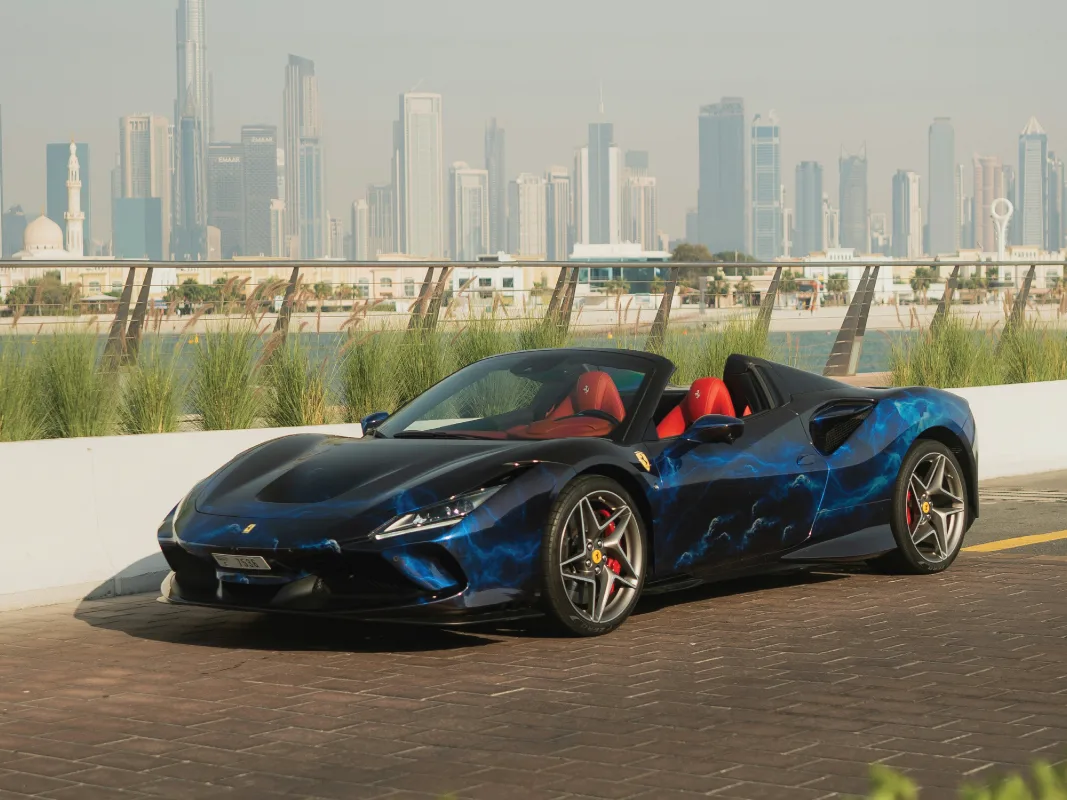
The Rise of Sustainable Luxury in the Gulf
For decades, the Gulf region has been synonymous with opulence. Glittering skyscrapers, luxury shopping avenues, high-end cars, and a culture that embraces grandeur have defined its global image. Yet, beneath this glittering façade, a quiet transformation is underway—one where sustainability is no longer an afterthought but a new definition of luxury.
Across fashion, beauty, real estate, and hospitality, a wave of eco-consciousness is reshaping how consumers and brands alike perceive luxury. The Gulf’s affluent population, once captivated purely by exclusivity and status, is now demanding products and experiences that align with values of environmental responsibility, wellness, and ethical consumption. BUZZAAR explores how this shift is taking shape across the GCC and the brands leading the way.
Fashion: When Green Meets Glamour
Luxury fashion has always thrived in the Gulf, home to some of the world’s largest malls and highest per-capita spenders on designer labels. But a new consumer profile is emerging—younger, socially aware, and unwilling to compromise on sustainability.
International brands have taken notice. From Gucci’s carbon-neutral runway shows to Stella McCartney’s plant-based materials, eco-luxury is no longer niche but mainstream. These global trends resonate strongly in GCC markets like Dubai, Doha, and Riyadh, where Gen Z and millennial consumers are increasingly vocal about ethical fashion.
Local designers are also carving a niche by weaving sustainability into their identity. Noora Hefzi, the Dubai-based designer, is celebrated for her timeless silhouettes crafted in small, ethical batches. In Saudi Arabia, Honayda Serafi’s brand “HONAYDA” blends luxury with conscious sourcing, ensuring minimal waste while spotlighting regional craftsmanship.
Meanwhile, rental platforms and resale apps are gaining traction among fashion-savvy consumers. Initiatives such as Designer-24 in the UAE or global luxury resale platforms now operating in the GCC allow customers to enjoy couture without adding to the cycle of overproduction. This shift not only challenges the traditional notion of ownership but also brings sustainability to the forefront of high fashion.
Beauty: Clean, Green, and Luxurious
The beauty industry in the Gulf is also undergoing a green revolution. For years, luxury beauty was associated with exclusivity, exotic ingredients, and lavish packaging. Today, luxury beauty is increasingly defined by clean formulations, cruelty-free practices, and eco-friendly packaging.
Global players like Chanel and Dior are rethinking packaging with refillable models, while skincare houses like La Mer are investing in ocean conservation initiatives. The UAE has also seen a boom in homegrown clean beauty brands. Shiffa Beauty, founded by Emirati Dr. Lamees Hamdan, combines natural ingredients with a holistic philosophy rooted in the region’s wellness traditions. Similarly, KJ Serums from Oman has gained popularity for its minimalist, effective formulations that prioritize both skin health and environmental sustainability.
This shift isn’t just about product development—it reflects the GCC consumer’s evolving mindset. Shoppers today want to know the story behind their serum or lipstick: Where was it sourced? Is it cruelty-free? Can the packaging be recycled? Beauty, once about prestige alone, is now about conscious indulgence.
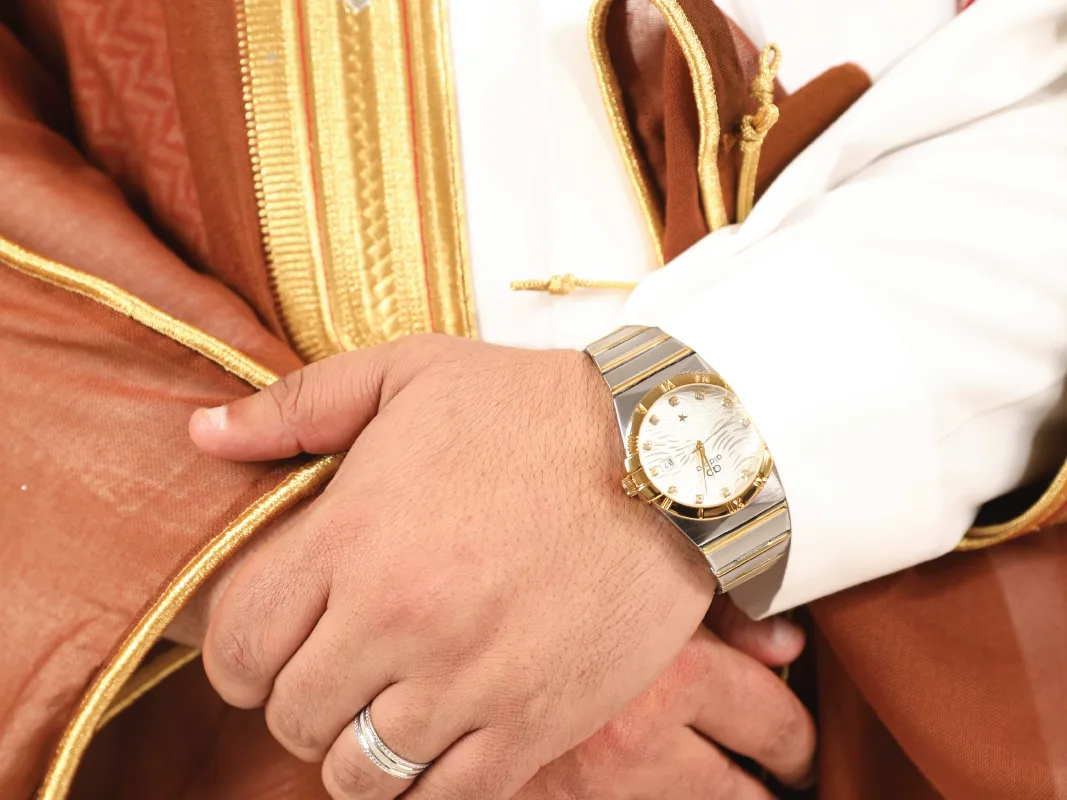
Real Estate: Sustainable Luxury Living
Perhaps the most striking transformation is unfolding in the real estate and hospitality sectors, where eco-luxury living is becoming a new standard. The GCC, with its ambitious cityscapes and futuristic developments, is reimagining luxury homes and resorts through a green lens.
In Dubai, projects such as The Sustainable City offer net-zero energy villas, solar-powered infrastructure, and green spaces that redefine luxury living. Residents enjoy both exclusivity and the peace of mind that their homes tread lightly on the environment. In Saudi Arabia, the NEOM megaproject promises a new model of sustainable urbanism, combining high-tech innovation with environmental stewardship.
Luxury hospitality is also embracing the trend. Resorts in Oman and the UAE are investing heavily in eco-tourism experiences, from coral reef conservation programs to farm-to-table dining concepts. For high-net-worth travelers, true luxury increasingly means privacy, authenticity, and harmony with nature—not excess.
Why Sustainability Equals Luxury in the Gulf
Sustainability and luxury might seem like opposing forces—one rooted in restraint, the other in indulgence. But in the Gulf, the convergence makes perfect sense.
- Exclusivity Through Rarity – Eco-conscious luxury often involves limited production, artisanal craftsmanship, and rare materials—qualities that align seamlessly with luxury consumers’ desire for uniqueness.
- Cultural Resonance – The Gulf’s heritage emphasizes stewardship of natural resources, from water conservation in desert life to respect for natural remedies. Sustainable luxury revives these traditions in a modern form.
- Global Prestige – For GCC consumers, luxury is also about global relevance. By embracing sustainability, they align with international standards and trends, enhancing status not only locally but globally.
- Next-Gen Consumers – The GCC has one of the world’s youngest populations. These consumers are digital natives, exposed to global environmental movements, and eager to reflect their values in their purchasing power.
Eco-Initiatives to Watch
- Dubai’s Green Fashion & Lifestyle Exhibition: An annual event showcasing sustainable fashion and lifestyle brands, highlighting how luxury and sustainability can coexist.
- Saudi Green Initiative: A national movement planting 10 billion trees, which will inevitably influence real estate and luxury lifestyle developments.
- Local Jewelry Brands: Designers like Aisha Baker are experimenting with ethically sourced gems and recycled metals, proving fine jewelry can sparkle without guilt.
- Circular Economy Start-ups: Companies like Cartlow in the UAE, focusing on re-commerce and refurbishment, are adding sustainable convenience to the luxury lifestyle ecosystem.
The Future of Sustainable Luxury in the GCC
Looking ahead, the rise of sustainable luxury is not just a passing trend but a long-term transformation. GCC governments are investing heavily in green infrastructure, and brands that fail to adapt risk losing relevance in a rapidly evolving market.
For consumers, sustainable luxury offers the best of both worlds—the indulgence of fine living coupled with the assurance of ethical, eco-conscious choices. Whether it’s slipping into an ethically crafted couture gown, applying a clean luxury serum, or stepping into a solar-powered villa overlooking the Gulf, the message is clear: true luxury is no longer just about owning more, but about owning better.
Key Insights – As BUZZAAR continues to track lifestyle trends across the region, one truth stands out: the Gulf is redefining luxury for the world, proving that sustainability and sophistication can not only coexist but thrive together.

